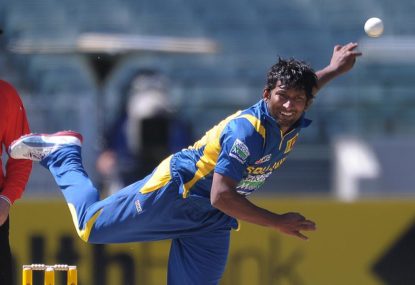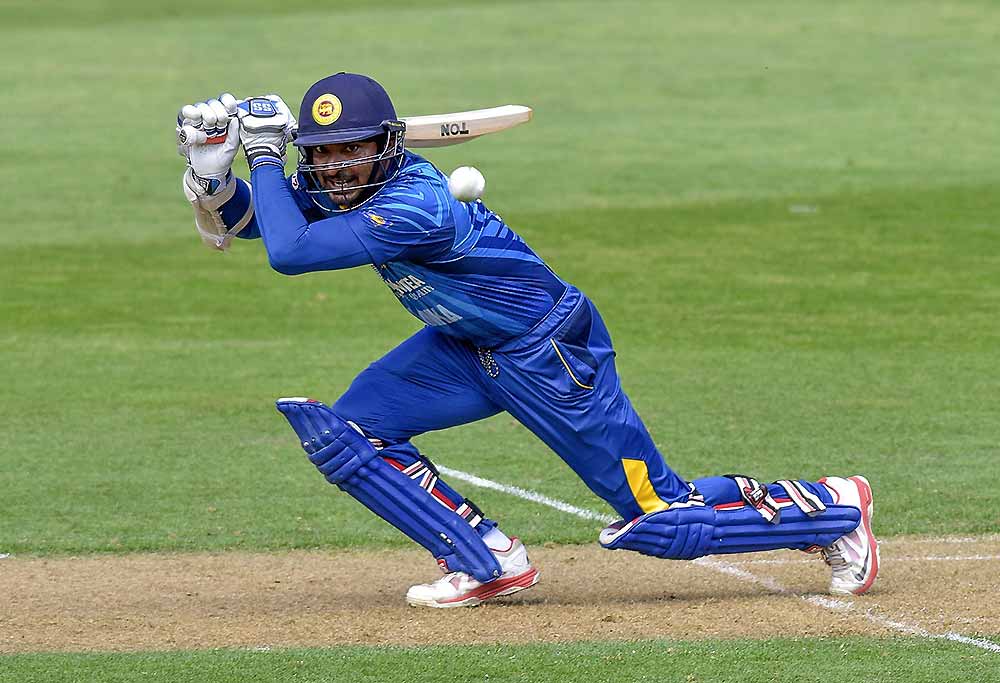Travis Head obliterates RCB in record breaking century... and just wait for the celebration!
RCB have suffered a massive HEAD-ACHE after Travis Head smashed the fastest century by an SRH player in just 39 balls, as they amassed…

At the beginning of the Champions Trophy in England and Wales both South Africa and India were the odds-on favourites from group B.
Indeed, after the first round of games in the group, things looked like moving in the predicted direction. South Africa’s comfortable win was followed by India thrashing their arch rivals Pakistan in Sunday’s big fixture.
Yet, within a week, the picture has changed. First the Pakistani bowlers excelled in upsetting the South Africa middle order to set up a victory. Then on Thursday, Sri Lanka successfully chased down their target of 322 against the defending champions India.
In the process they created a new record for successful chases in the history of Champions Trophy cricket.
As things stand, the two remaining fixtures in the group are virtual quarter finals, with all the four teams with equal points at the moment.
I am a keen follower of Sri Lankan cricket. Way back in January 1978 I saw a Sri Lankan team, led by Anura Tenikoon thrash our local boys time and again during a month-long tour here.
Sri Lanka at the time was still an associate member but they knew the full Test status was coming soon so they took all the fixtures here very seriously. Unfortunately, Bangladesh cricket had just begun its journey and we saw a string of mismatches.
Interestingly; the most important contribution from SL regarding our cricket hasn’t come via international matches. Rather it was the SL players playing club cricket here in Dhaka, who made a big contribution in the development of cricket here.
During the 1988-89 season a number of top SL players like, Arjuna Ranatunga, Hassan Tilekaratne, Brendon Kuruppu, Ashoka De Silva, and many others played club cricket here with great distinction.
Not only did they help raise the level of cricket here, more importantly they helped in developing professional attitude about cricket among our local boys.
The 90s saw SL emerge as a strong force in ODI and it culminated in them winning the 1996 World Cup in style. In fact, their batting during the event can be described as the forerunner to the modern day explosive style, used by teams like England and Australia.
Before the Lankans, other teams tried aggressive opening batsmen; hoping to take advantage of the field restrictions in the first 15 overs.
India had Krish Srikkanth while New Zealand had Mark Greatbatch. The Lankans, however didn’t go for just one or two attacking players.
They packed their top seven with attacking minded batsmen, making it difficult for the opposition bowlers to relax.
In the SF against India; they lost their openers in the first over, but still Aravinda De Silva counter attacked brilliantly to lead them to a famous victory.
In more recent times; they were the losing finalists of 2007 and 2001 World Cups, before winning T-20 version in 2014.
That year, they had a memorable tour of England, winning the Test, ODI and T-20 series. Sadly, this achievement largely went unnoticed, due to the World Cup football going on in Brazil almost simultaneously.
Still, 2014 was a memorable year for Sri Lankan cricket, but the 2016 tour to England, with the team in rebuilding process, became a humiliation.

kara. (AFP/Marty Melville)
They have come to this event with the rebuilding still in progress. In their first match against SA they had their chances. They were happy chasing 300 and for a long time they kept a good run rate. But, in the process they lost too many wickets as Imran Tahir appeared almost unplayable to the SL middle order.
In the match against India they again did well in the field. They fought back from the onslaught by the Indian openers, taking vital wickets at vital times, and restricting the Indians to 321/6 from the 50 overs.
When they batted Kusal Mendis with an elegant 89 became the main hero and was rightly judged the MoM. Although only 22, he has already made a name for himself with his effortless driving through the offside and for his delicate leg side flicks.
Yet, his current record shows averages in the mid 30s in both Test and ODI cricket and his T-20 record is pathetic – he has scored a mere 74 runs from eight matches with an average of 9.25.
He has time in his side, and on the evidence of his efforts at the Oval his record will improve enormously in time.
Here he was denied a hundred following a bad misjudgment in running.
In fact, two bad run outs in the middle of the innings, briefly made us wonder whether the inexperienced team would crumble under pressure yet again. Thankfully, skipper Angelo Matthews stood firm to take his side over the line in the 49th over.
As for the match two points came in to the limelight yet again. A score of 300 has become pretty much a par score in most grounds as teams batting second feel pretty confident chasing such targets.
Yet, an extra 35-40 runs can make a big difference. On the first look it may seem 40 runs isn’t a big thing in today’s ODI format – it is a matter of two/three big overs.
Yet, if we look carefully, an extra 40 runs means at the end of ten overs, the asking run rate increases by one.
After 30 overs it is two and after 40 overs, it becomes additional four runs per over. It will be interesting to see how long the SL record, set at the Oval, remains intact.
The other thing is the importance of aggressive bowling in the middle overs – especially by the spinners. In the first match of the event, I was surprised to see England going with five frontline seamers and ignoring Adil Rashid.
Australia went against New Zealand without Adam Zampa. At that time many people were wondering about the role of spinners in modern ODI game.
Since then, Imran Tahir, Adam Zampa and Adil Rashid have made their mark in the event. Sadly for India, Ravindra Jadeja, who was preferred to Ravichandran Ashwin, had a miserable day going for 0/52 from just six overs.
At times, the containing spinners bowls ten overs in the middle of a high scoring innings. They go for something like 0 for 50 and gets lots of plaudits.
The reality is that the containing spinners don’t put enough pressure on the batsman. Someone like AB De Villiers (provided he is in form), can take his time to build his innings, and then can thrash the bowling in the last 8/10 overs.
I fully expect R. Ashwin to come in to the Indian team in the match against SA.
Coming back to the SL team, they now need to beat Pakistan to qualify for the SF. Even a tie (or an abandonment) should be enough, given that they have a better net run rate than Pakistan.
Even if they fail to qualify for the SF, their performance here would give them hope. The rebuilding process would take some time but their showing against India would suggest that they are very much on the right track.